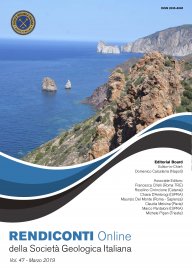
Flow parameters in porous alluvial aquifers evaluated by multiple tracers
Alberto Tazioli (1), Lucia Aquilanti (2), Francesca Clementi (2), Mirco Marcellini (1) Torquato Nanni (1), Stefano Palpacelli (3), Andrea Roncolini (2) & Paola Maria Vivalda (1)
(1) Department of Scienze e Ingegneria della Materia, dell'Ambiente ed Urbanistica, Università Politecnica delle Marche, Via Brecce Bianche Ancona, Italy.
(2) Department of Scienze Agrarie, Alimentari e Ambientali, Università Politecnica delle Marche, Via Brecce Bianche Ancona, Italy.
(3) Geologist
Corresponding author e-mail: a.tazioli@univpm.it
Volume: 47/2019
Pages: 126-132
Abstract
Dye tracer tests are a good technique useful to determine the hydrogeological parameters of aquifers, especially in alluvial plains, where the heterogeneity of the lithology is a key factor leading the groundwater circulation. In the last decade, new tracers have been developed and introduced in the hydrological and geological context, including DNA tracers, that are used in the same way as the traditional
tracers. In this study, some experiments were performed in a porous aquifer with the aim of comparing the behavior of different tracers for the evaluation of aquifer’s parameters, and of testing the suitability of a DNA tracer in this geological context. Single well and multiwell tests were performed during the winter and spring 2017, involving one piezometer and 4 wells. The tracer test results highlighted faster
zones of flow in the alluvial plain, being located at different depths, whose levels are characterized by gravel and sand layers. A maximum groundwater velocity of around 170 cm/day was revealed by the single well tests, whereas the main direction of flow was along the watercourse axis, as resulted by the multi well tracer test.
The overall results obtained confirmed that fluorescent tracers are a very valuable and reliable tool for the determination of groundwater velocity, groundwater flow direction and dispersion parameters, even in cases of multi-layered aquifers, whereas DNA tracers are very helpful in the determination of faster circuits and vertical flow even in multi-layered aquifers.
Keywords
Get Full Text